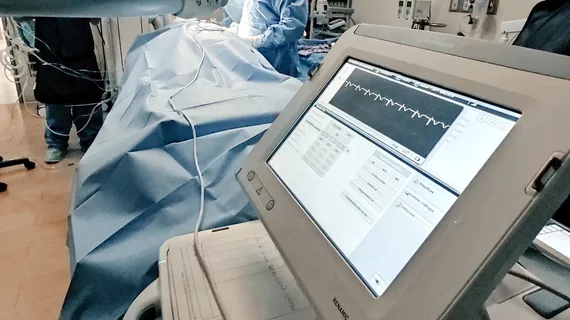Left bundle branch pacing emerges as an alternative to biventricular pacing in two late-breaking trials
Two late-breaking clinical studies at Heart Rhythm 2023 highlight the success of left bundle branch area pacing (LBBAP), or his-bundle pacing (HBP), as an alternative to the standard of care using biventricular pacing (BVP) for patients requiring cardiac resynchronization therapy (CRT).
The results add to a growing body of evidence supporting the new pacing method. LBB pacing was discussed in numerous sessions at the Heart Rhythm Society (HRS) annual meeting. Several electrophysiology (EP) experts said the new method will likely become a new standard of care in the coming years as more clinical evidence mounts.
Today, heart failure impacts more than 64 million people worldwide [1]. CRT is a treatment option that uses a pacemaker to restore heart rhythm among patients with heart failure or conduction irregularities. While BVP is an established treatment method for patients who require CRT, LBBAP is emerging as an alternative solution that can effectively deliver cardiac pacing. Physicians continuously compare the two conduction therapies to deliver improved patient care and explore safe treatment options for heart failure patients.
The findings of the following two studies highlight the efficacy of LBBAP and HBVP as alternative treatment options to biventricular pacing for patients undergoing CRT.
HOT-CRT trial found greater improvement in left ventricular ejection fraction compared to BVP
The His-Purkinje conduction system pacing optimized trial of cardiac resynchronization therapy versus biventricular pacing was a randomized controlled clinical trial (HOT-CRT) designed to evaluate the efficacy of conduction system pacing-guided resynchronization and BVP CRT.[2] The patient population of the study had left ventricular ejection fractions (LVEF) below 50% and had class 1 or 2 indications for CRT.
Among the 100 randomized patients, HOT-CRT was successful in 48/50 (96%) and BVP-CRT in 41/50 (82%). In this pilot study, HOT-CRT was associated with greater improvement in left ventricular ejection fraction compared to BVP (12.4% vs 8% increase, p=0.02) at six months. However, the efficiency of HOT-CRT requires further validation by larger prospective multicenter randomized controlled trials with longer follow-up periods, researchers noted.
"This randomized trial demonstrated a strong rate of success between both LBBP and BVP therapies. When looking at both CRT options, we believe this should be a positive signal for physicians who are recommending His-Purkinje conduction system pacing as a treatment for their patients,” explained the study presenter Pugazhendhi Vijayaraman, MD, of the Geisinger Heart Institute in Wilkes-Barre, Pennsylvania, in an HRS statement. “We hope the results of this trial will give physicians an alternative option for consideration that will ultimately improve clinical outcomes and overall patient care."
LBB area pacing may be superior compared to traditional BVP in patients requiring CRT
The "Left Bundle Branch Area Pacing Compared To Biventricular Pacing For Cardiac Resynchronization Therapy: Results From International LBBAP Collaborative Study Group" late-breaker included 1,778 patients from 15 centers across the globe who underwent BVP (981) or LBBAP (797) for the first time for CRT [3]. The patients had LVEF at or less than 35%.
The study found paced QRSd (ms) in LBBAP was more narrow than baseline (128±19 vs 161±28, p<0.001) and significantly more narrow compared to BVP (144±23, p<0.001). LVEF improvement was seen in both groups, but was greater in LBBAP compared to BVP (41±13 vs 37±12%, p<0.001). The study supported LBBAP as a promising alternative that may result in superior resynchronization compared to traditional BVP.
"While previous observational data has shown how LBBAP can improve clinical outcomes for patients with class 1 or 2 indications for CRT, this trial includes one of the largest series of patients to date. Although traditional BVP set a high standard-of-care for patients, these findings add to the growing body of evidence showing LBBAP as a successful CRT option that is being seen more frequently in centers across the globe,” said Vijayaraman.

